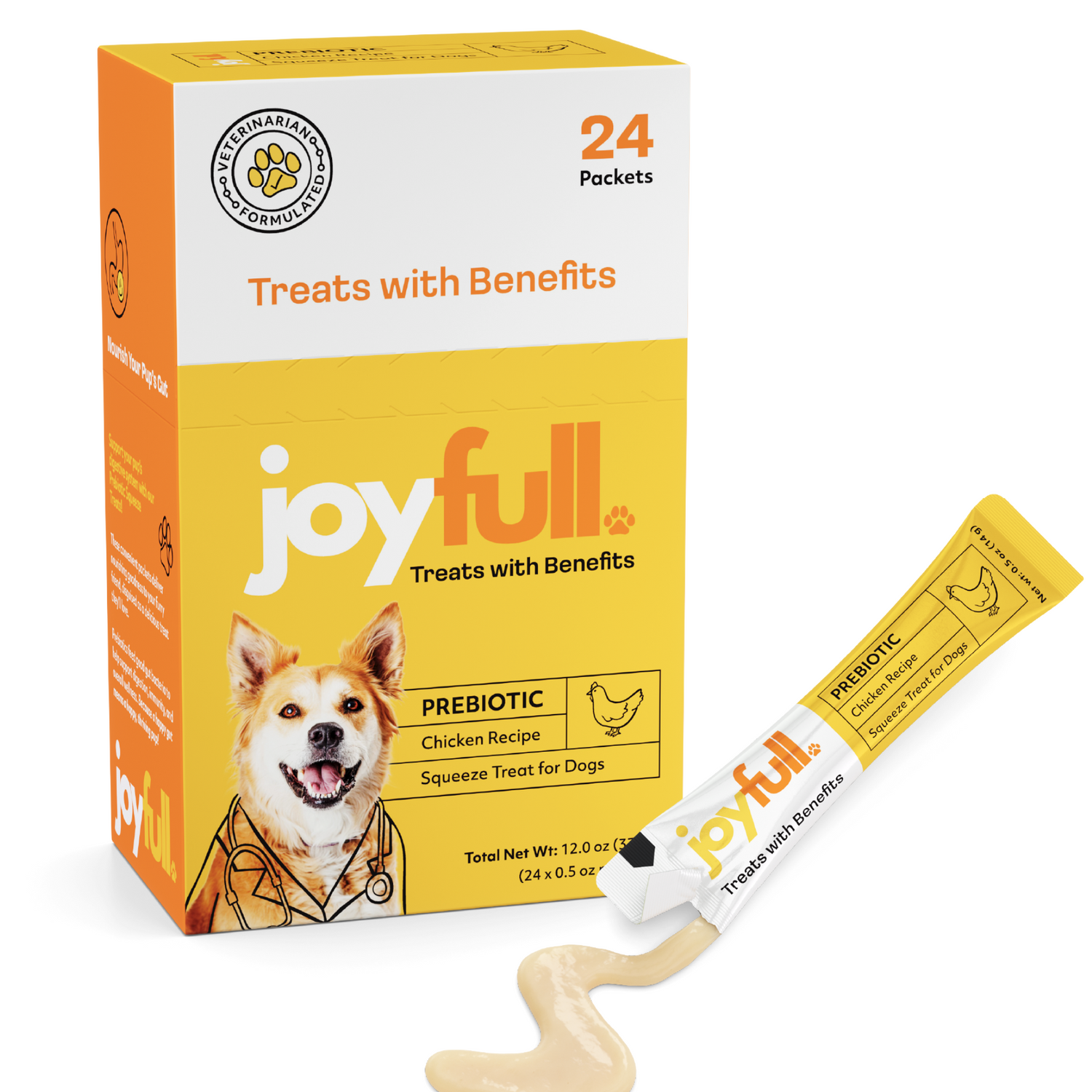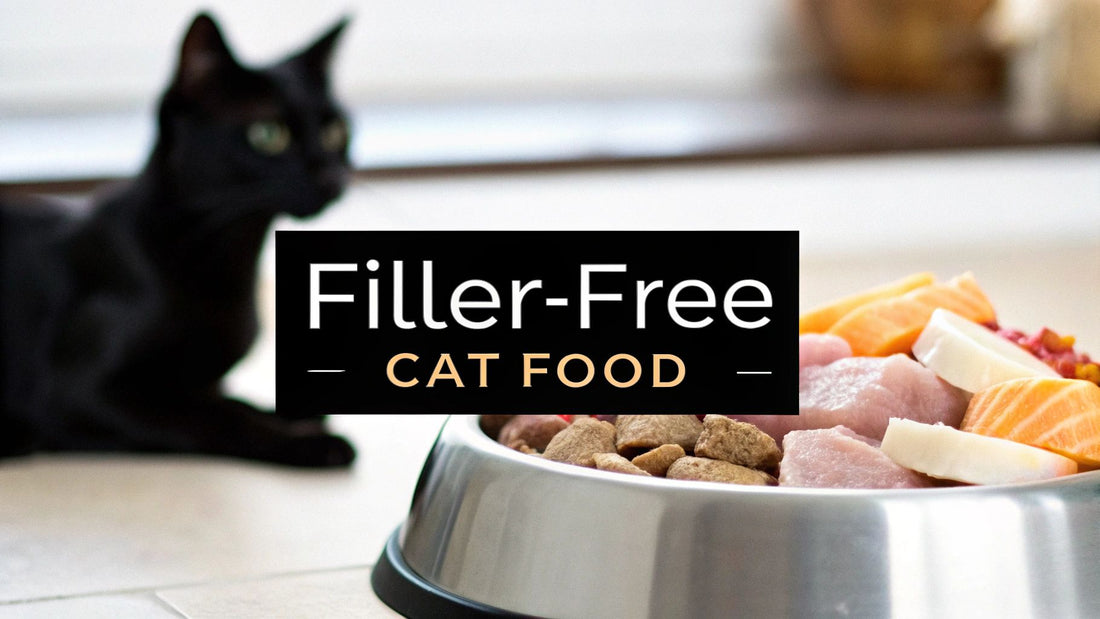
Choosing Cat Food Without Fillers
When you hear the term "cat food without fillers," it simply means the food is built around high-quality, meat-based proteins instead of cheap, low-nutrient ingredients like corn, wheat, and soy. This is a big deal because your cat is an obligate carnivore—a biological fact that means they are designed to get their nutrition from animal sources for peak health.
Why Filler-Free Cat Food Is a Game Changer
Picking the right cat food can feel like a chore, but it gets a lot simpler when you remember one core truth: your cat is a carnivore, built from the ground up to eat meat.
So, what are these "fillers" we hear so much about? They aren't necessarily dangerous, but they're essentially cheap bulking agents. Think of common ingredients like corn, wheat, and soy that add mass to the food but don't deliver the high-quality, digestible protein your cat's body craves.
It's a lot like the difference between us eating a nourishing meal of grilled chicken and veggies versus a bag of potato chips. Both will make you feel full, but only one is actually fueling your body properly. For a cat, fillers are the junk food—they’re tough to digest and offer very little of what they truly need.
This infographic really drives home why making the switch can be so beneficial for your cat's well-being.
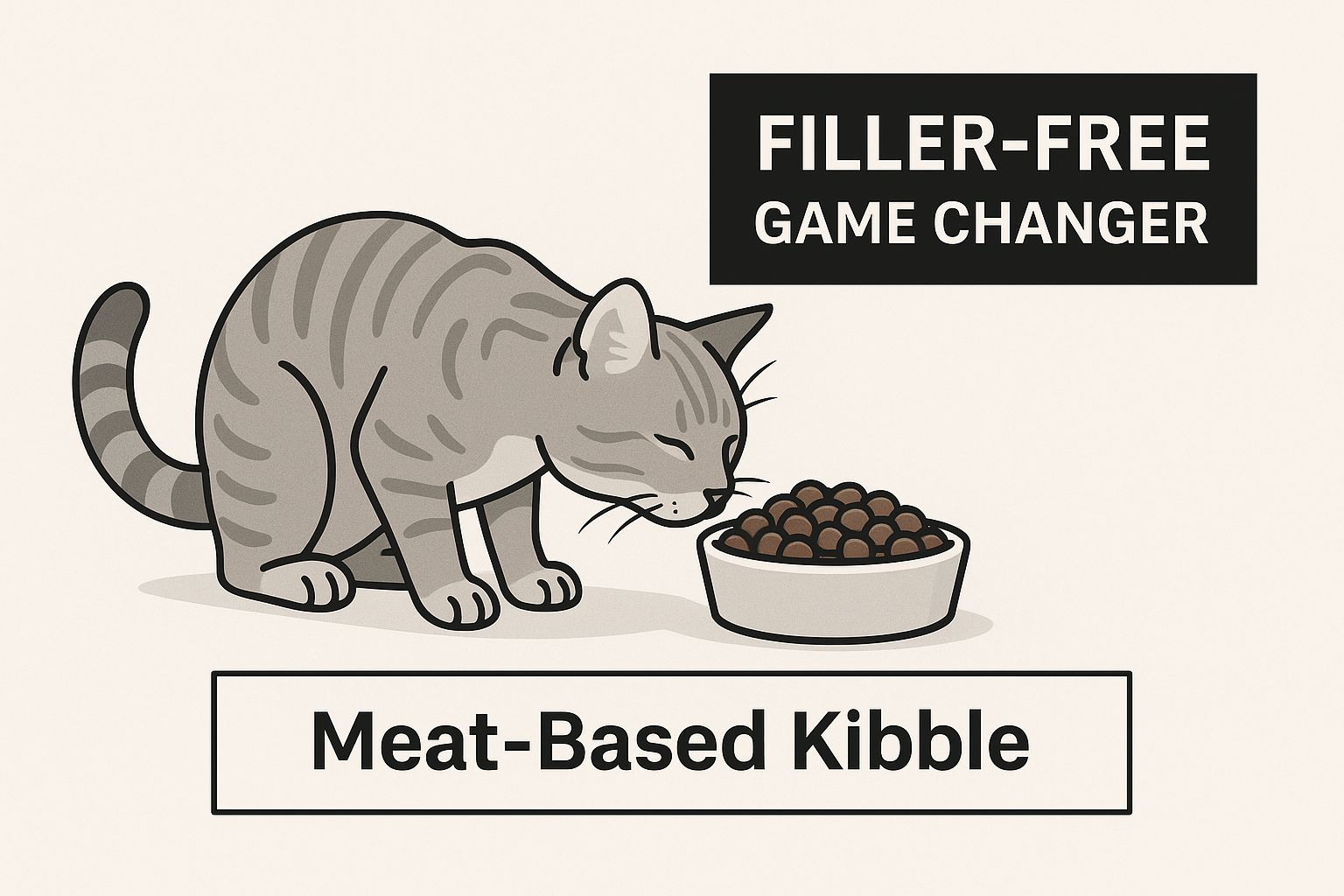
As you can see, a diet free from unnecessary fillers directly supports a cat's natural, carnivorous biology. It’s no surprise that as pet owners become more informed, the demand for better food has skyrocketed.
The global cat food market was valued at $23.38 billion in 2024 and is expected to climb to $32.01 billion by 2029, a trend largely fueled by this growing desire for healthier pet nutrition. If you'd like to dive deeper, you can explore more insights into the cat food market.
Our goal here is to give you the confidence to read those labels and choose a food that genuinely supports your little carnivore's health.
How to Decode Ingredient Labels and Spot Fillers
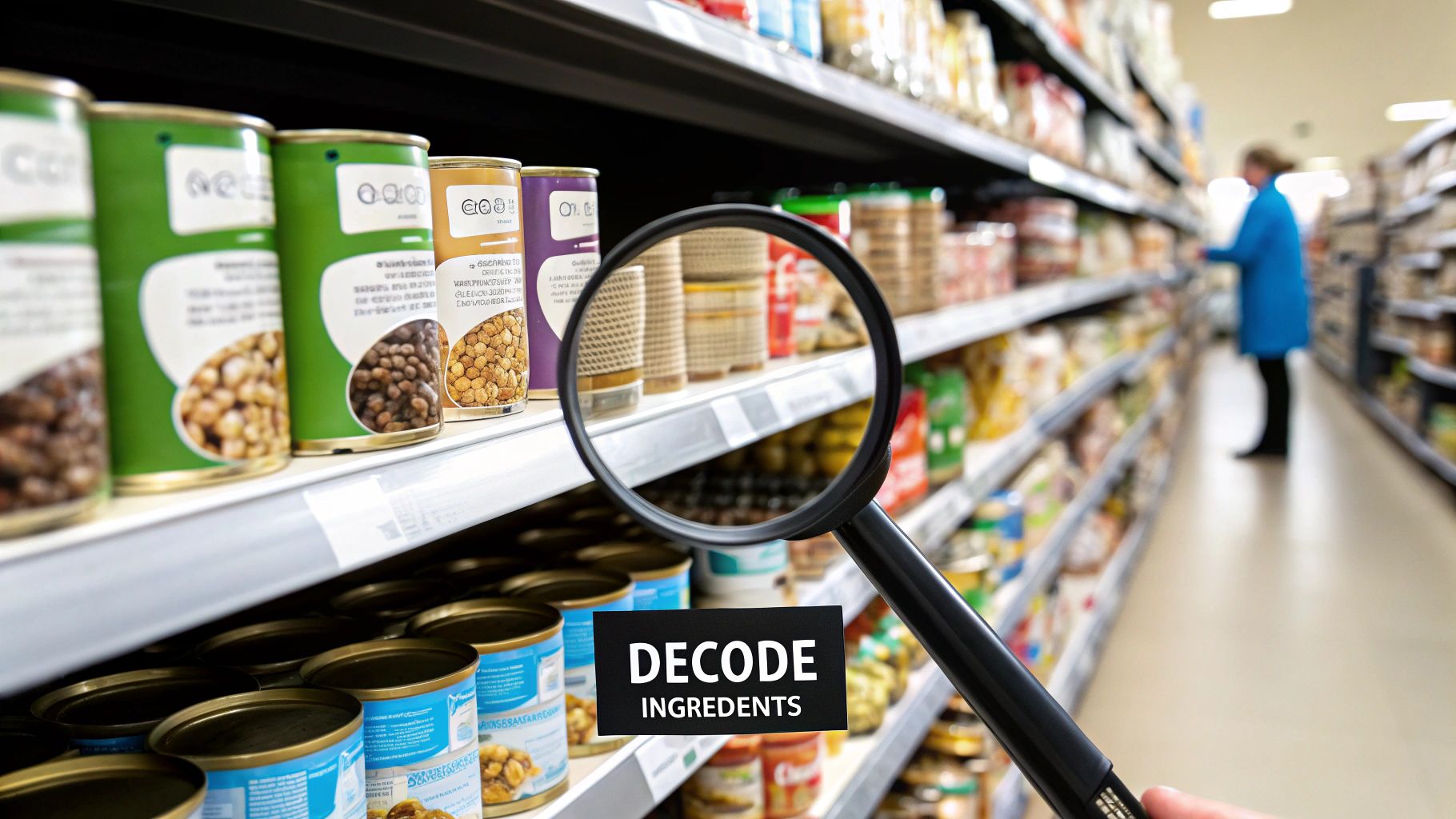
Learning to read a cat food label is like getting a behind-the-scenes look at what’s really in your cat’s bowl. It's the most powerful tool you have for sidestepping fillers and finding a truly high-quality diet.
The first thing to know is that ingredients are always listed by weight, starting with the heaviest. This one rule makes your job much easier. Your mission? Find specific, high-quality animal proteins right at the top of the list.
When you see phrases like "deboned chicken," "salmon," or "turkey" as the first or second ingredient, you're on the right track. These are the whole-food, animal-based proteins your little carnivore is built to eat.
On the flip side, vague terms are a major red flag. An ingredient like "meat by-products" is a mystery box—it could be anything from nutritious organs to less desirable animal parts. But an ingredient like "chicken liver" tells you exactly what's inside. When it comes to your cat's health, clarity is everything.
Spotting Common Filler Ingredients
So, what are we trying to avoid? Fillers are essentially cheap ingredients used to bulk up the food and give it structure (especially important for kibble) without adding much real nutritional value for your cat. Once you know the usual suspects, they become much easier to spot.
Here are a few of the most common ones to watch out for:
- Classic Grains: Corn, wheat, and soy are the big three. They aren't necessarily toxic, but they pack a lot of carbohydrates that are tough for many cats to digest.
- Plant Protein "Boosters": Ingredients like pea protein or potato protein are often used to pump up the overall protein percentage on the label. The problem is, this plant-based protein isn't nearly as useful to your cat's body as protein from meat.
- Too Many Starches: Small amounts of sweet potatoes or peas aren't the end of the world. But if you see them listed high up on the ingredient list—before the primary meat source—it’s a clear sign the food is leaning heavily on carbs instead of quality protein.
To make this even clearer, let's break down what you're looking for versus what you want to avoid. This table is a quick cheat sheet for your next trip to the pet store.
Common Fillers vs. High-Quality Ingredients
| Ingredient Category | Avoid (Filler) | Look For (Quality) |
|---|---|---|
| Protein Sources | "Meat By-Products," Pea Protein, Corn Gluten Meal | "Deboned Chicken," "Salmon," "Turkey," "Beef Liver" |
| Carbohydrates | Corn, Wheat, Soy, White Rice | Sweet Potatoes, Pumpkin, Carrots (in small amounts) |
| Fats | "Animal Fat" (unspecified), Vegetable Oil | "Chicken Fat," "Salmon Oil," Flaxseed |
This simple comparison highlights the difference between vague, low-value ingredients and the specific, nutrient-rich ones that truly support your cat's health.
"The term 'filler' isn't legally defined, which allows marketers to use 'no fillers' as a buzzword. The real test is reading the ingredient list yourself to see if the food is built on species-appropriate animal protein or cheap, starchy substitutes."
This is why getting familiar with cat food ingredients to avoid is so important. It empowers you to see past the marketing claims on the front of the bag.
Your goal is simple: find a food where the first several ingredients are named animal sources. By prioritizing real meat and learning to spot the fluff, you can feel confident you're giving your cat the fuel they need to thrive.
The Real Health Benefits of a Filler-Free Diet
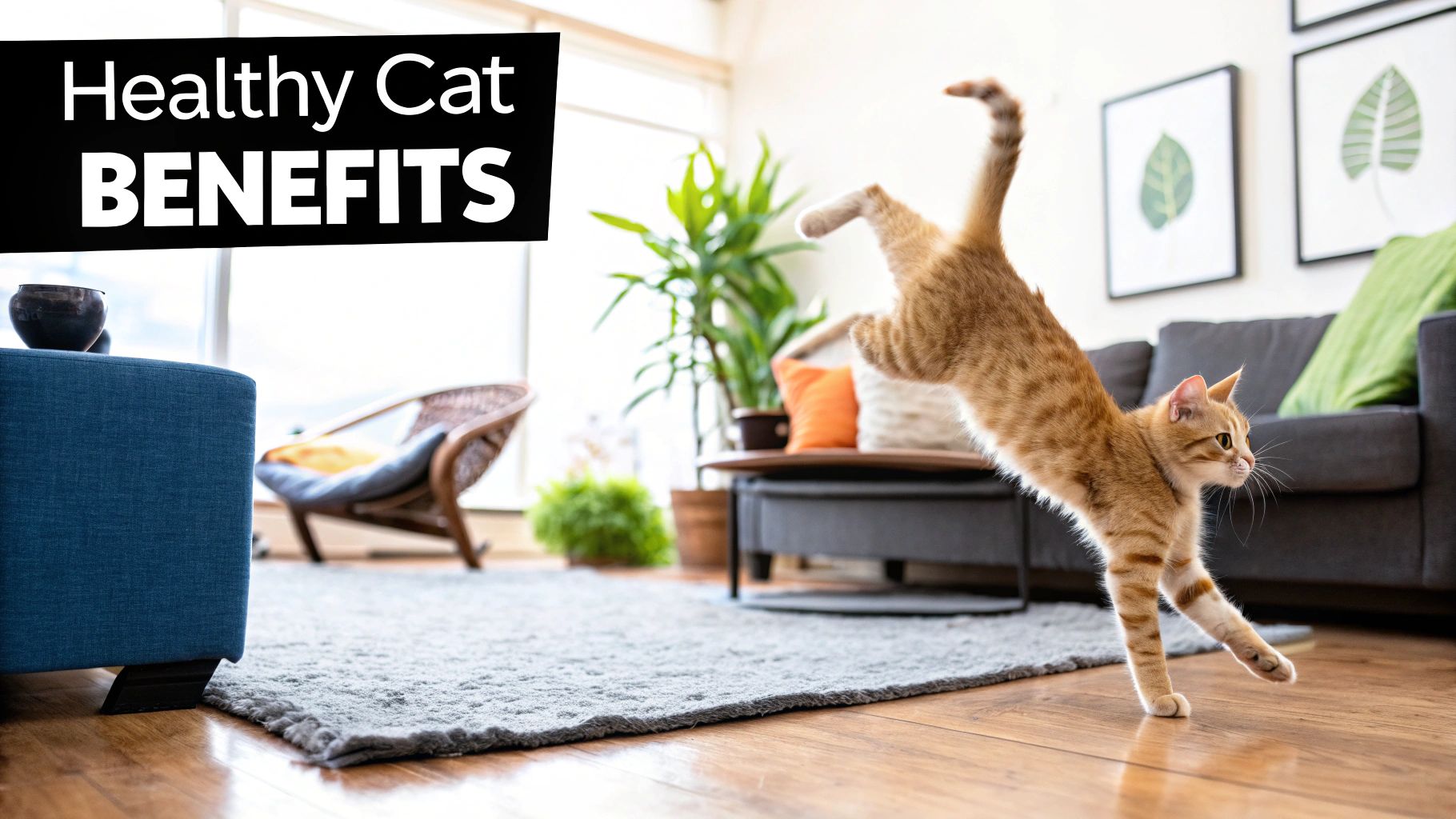
Choosing cat food without fillers isn't just about following a trend. It's a fundamental investment in your cat's health, and the positive changes are often things you can actually see and feel.
Think of your cat's digestive system. It's built to run on one thing: high-quality animal protein. When you take out hard-to-digest fillers like corn and wheat, you’re giving their body the fuel it was designed for. The result? Better digestion, less tummy trouble, and firmer, less smelly stools.
Better Health from the Inside Out
One of the first things people notice is a huge improvement in their cat's coat. The high-quality proteins and healthy fats in filler-free foods are exactly what a cat's body needs to grow a soft, shiny coat. You’ll probably see less shedding and a healthier glow to their fur.
But the benefits go much deeper than a pretty coat. A species-appropriate diet fuels their entire body more effectively.
- Lean Muscle Support: Good animal protein helps maintain the strong, lean muscles cats need to jump, pounce, and play.
- Healthy Weight Management: Cutting out the empty calories from carb-heavy fillers makes it much easier to keep your cat at a healthy weight, which takes a lot of stress off their joints.
- Increased Energy Levels: When every bite is packed with usable nutrients, you get sustained energy. Don't be surprised if your formerly sleepy cat suddenly has more zest for life!
A diet rich in digestible, meat-based protein doesn't just fill your cat's stomach—it provides the specific nutritional tools their body needs to build muscle, maintain a healthy coat, and generate energy for a vibrant life.
At the end of the day, switching to cat food without fillers means you're feeding them in a way that respects their carnivorous biology. This simple change empowers their body to thrive, leading to a visibly happier and healthier companion.
Navigating the Market for the Best Filler-Free Foods
https://www.youtube.com/embed/jLNiAxeNlXQ
With so many brands yelling "natural!" and "premium!" from the shelves, finding a genuinely great cat food without fillers can feel overwhelming. The secret isn't getting lost in marketing hype; it's about having a simple, reliable strategy to cut through the noise.
Your first stop should always be the ingredient list. Always. A top-quality food will have a named animal protein—think "deboned chicken" or "salmon"—listed as the very first ingredient. This is your biggest clue that the food is built around what your cat actually needs, not cheap plant substitutes.
Beyond that, scan for low carbohydrate content and look for brands that are open about where they get their ingredients. Transparency is a huge green flag. It’s no wonder the premium cat food market is expected to rocket to $6 billion by 2028 as more owners demand better for their pets. You can discover more insights about premium pet food on petfoodindustry.com to see just how big this shift is.
Choosing the Right Food Format
The type of food you choose—wet, dry, or something in between—also makes a difference in your filler-free journey. Each format has its own set of pros and cons.
- Wet Food: This is often the gold standard for cats. Since they are obligate carnivores, the high protein and moisture content in wet food is fantastic for their kidney and urinary health.
- Dry Food (Kibble): There's no denying its convenience and affordability. But even the best kibble needs some starches to hold its shape, so it will almost always be higher in carbs.
- Raw-Infused or Freeze-Dried: These foods try to give you the best of both worlds—the nutritional punch of a raw diet with the ease of kibble. The trade-off? They usually come with a much higher price tag.
The best food is one that checks all the boxes—high animal protein, low fillers—while also working for your cat’s specific health needs and your budget.
At the end of the day, it's all about applying these principles every time you shop. Once you have this framework in mind, you can walk down the pet food aisle with confidence. For a deeper dive, our guide on how to choose cat food can help you find the perfect match for your feline friend.
So, you’ve picked out a fantastic, high-quality cat food without fillers. That's a huge win for your cat's health! But before you swap out their old food entirely, let's talk strategy. A sudden change can wreak havoc on their digestive system or, even worse, cause them to turn their nose up at the new food altogether.
The secret to a successful switch is taking it slow. Cats are creatures of habit, right down to their gut bacteria. A gradual transition gives their system time to adapt, which prevents tummy troubles and helps even the fussiest eaters come around. Honestly, rushing this process is the number one reason food transitions fail.
The 10-Day Transition Plan
Here's a tried-and-true method for making the switch seamless. The idea is to slowly introduce the new food while phasing out the old one, making the change so subtle your cat barely notices.
- Days 1-3: Start with a mix of 75% old food and 25% new food.
- Days 4-6: Shift the ratio to an even 50% old food and 50% new food.
- Days 7-9: You're almost there! Go with 25% old food and 75% new food.
- Day 10: Success! You can now serve 100% new food.
Keep a close eye on your cat during this time. Watch for any changes in their litter box habits or signs of discomfort. If something seems off, it's helpful to know the common signs of food allergies in cats just to be sure it isn't a more specific reaction.
Pro Tip for Picky Eaters: Dealing with a stubborn kitty? Try warming the new food just a tiny bit—it brings out the aroma and can make it much more appealing. You can also mix in a little something extra they love, like a sprinkle of freeze-dried chicken or a dash of tuna water, to coax them into giving it a try.
By following this gentle, step-by-step approach, you’re setting your cat up for a smooth transition to a much healthier, filler-free life.
Your Cat’s Health Starts in Their Food Bowl
Choosing a cat food without fillers is one of the single best things you can do for your cat’s long-term health. Now you have the tools to look right past the flashy marketing claims and understand what your cat actually needs to feel their best.
It all boils down to a few core ideas: put named meat ingredients first, sidestep common fillers like corn and soy, and always, always introduce a new food gradually.
When you put this knowledge into practice, you’re not just feeding your cat. You're becoming their number one health advocate.
Of course, what’s in the bowl is critical, but the bowl itself matters, too. Taking a moment to understand the importance of choosing the right food bowls for pet wellness can make a real difference, affecting everything from their digestion to overall cleanliness. Every informed choice you make helps build a foundation for a long, happy, and healthy life with your feline best friend.
Still Have Questions About Filler-Free Diets?
It's totally normal to have a few lingering questions when you're making a big change to your cat's diet. Let's tackle some of the most common ones so you can feel confident in your choices.
Aren't By-Products and Grains Just Fillers?
This is a really common misconception, and it's easy to see why. We see "grain-free" on a bag and automatically think "healthy." But sometimes, brands just swap out corn or wheat for other starchy carbs like potatoes and peas. The real goal is to see a named meat source right at the top of the ingredients list, not just to avoid grains.
The same goes for by-products. An ingredient like "meat by-products" is way too vague and should be a red flag. But something specific like "chicken by-product meal" can actually be a good thing, providing nutrient-packed organ meats. It all comes down to transparency on the label.
Choosing a filler-free food is an investment in preventative health. A nutrient-dense diet can lead to better long-term wellness, potentially reducing future veterinary expenses related to diet-influenced issues.
You're not alone in wanting better for your cat. This push for high-quality, health-first pet food is a huge movement. The global cat food market was valued at an incredible USD 34.13 billion in 2024, and it's only getting bigger as more of us demand better for our pets. You can discover more insights about the cat food market here.
